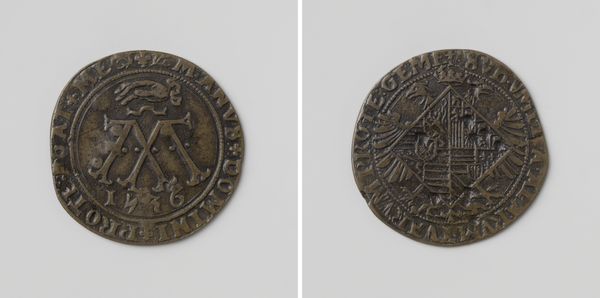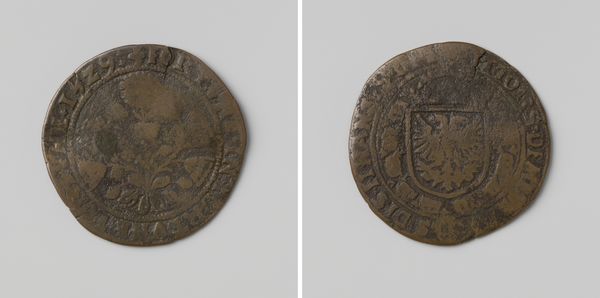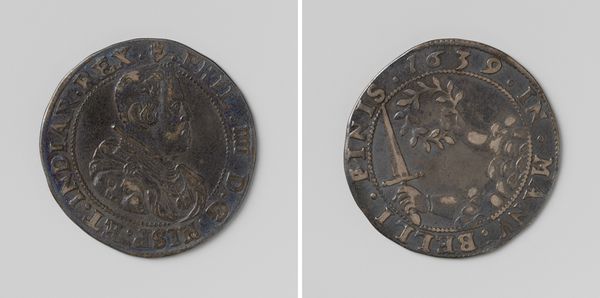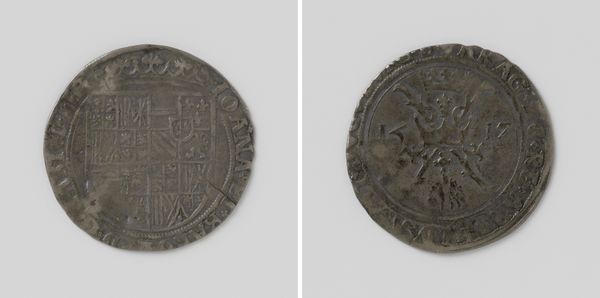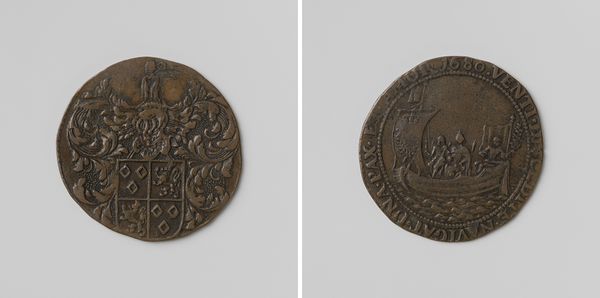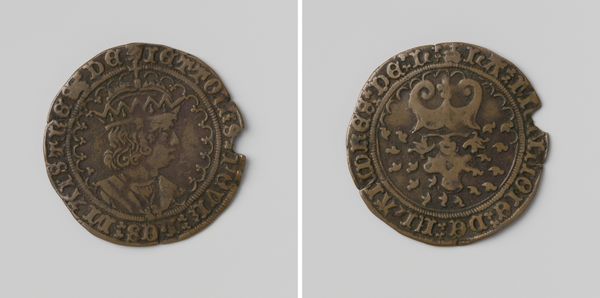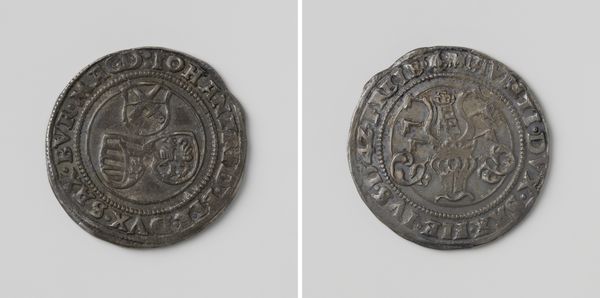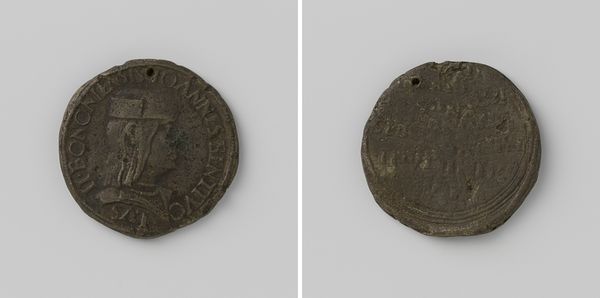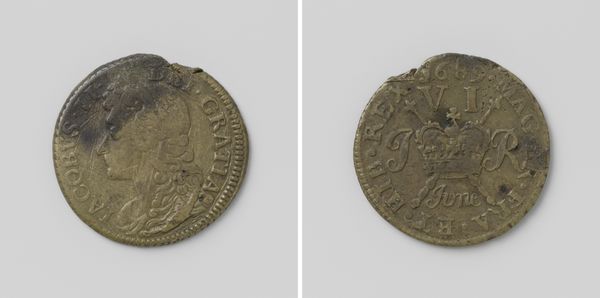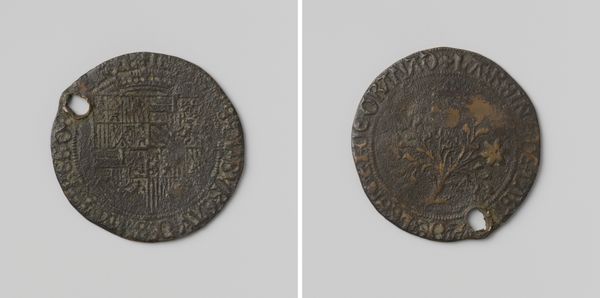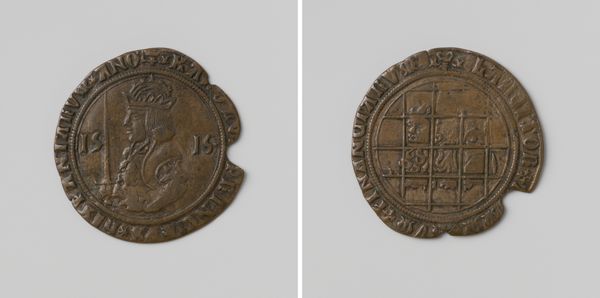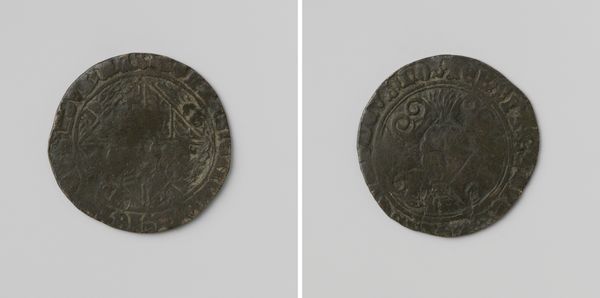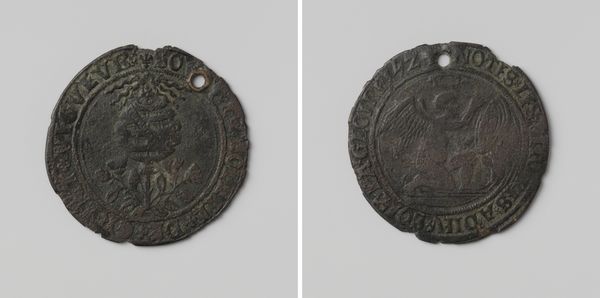
Verdrag van Toledo tussen Karel V, Duits keizer en Frans I, koning van Frankrijk, rekenpenning ten behoeve van Mr. Vincent Dammasz., klerk-ordinaris van de rekenkamer van Holland 1539
0:00
0:00
carving, metal, relief, sculpture
#
medieval
#
carving
#
metal
#
sculpture
#
relief
#
11_renaissance
#
sculpture
#
carved
Dimensions: diameter 2.8 cm, weight 3.84 gr
Copyright: Rijks Museum: Open Domain
Editor: Here we have a metal reckoning penny from 1539, commemorating the Treaty of Toledo between Charles V and Francis I. Looking at the worn details and considering the high stakes, it feels like a weighty artifact despite its small scale. What historical narratives are embedded in such an object? Curator: That’s a fantastic observation. Objects like these, particularly those related to treaties, were deeply entangled with the performance of power and solidified status and ideology. The treaty itself aimed to quell tensions, yet these pennies served to cast them within a specific light. Editor: A specific light? Could you elaborate? Curator: Consider the visual rhetoric at play. The imagery—presumably meant to symbolize agreement and peace—must also be decoded with a critical eye toward who benefits and whose narrative is valorized. Do we see visual signs of parity between the rulers? Or are certain visual strategies used to subtly elevate one over the other? This was also for Mr. Vincent Dammasz, which we learn in the text surrounding the art piece: where did his influence play a role? These types of negotiations often solidify structures and systems that continue inequality. Editor: That makes me consider how even peace can be a tool of power. Were these tokens commonly circulated? Did the average person encounter these objects? Curator: Yes and no. While figures such as Dammasz surely handled similar items often, popular dissemination was less direct, though images from these recirculated within society in various ways. Approaching art history this way pushes us to consider not just the aesthetic or historical value, but the active role these pieces play in shaping sociopolitical landscapes. Editor: I’ve never really considered that about something as simple-seeming as a coin. It makes you wonder how such seemingly small artifacts bolstered power imbalances in the medieval and Renaissance periods. Curator: Exactly. Questioning what these artworks are *doing*—that’s where real understanding begins. Editor: Well, thank you; that's definitely shifted my perspective.
Comments
No comments
Be the first to comment and join the conversation on the ultimate creative platform.
